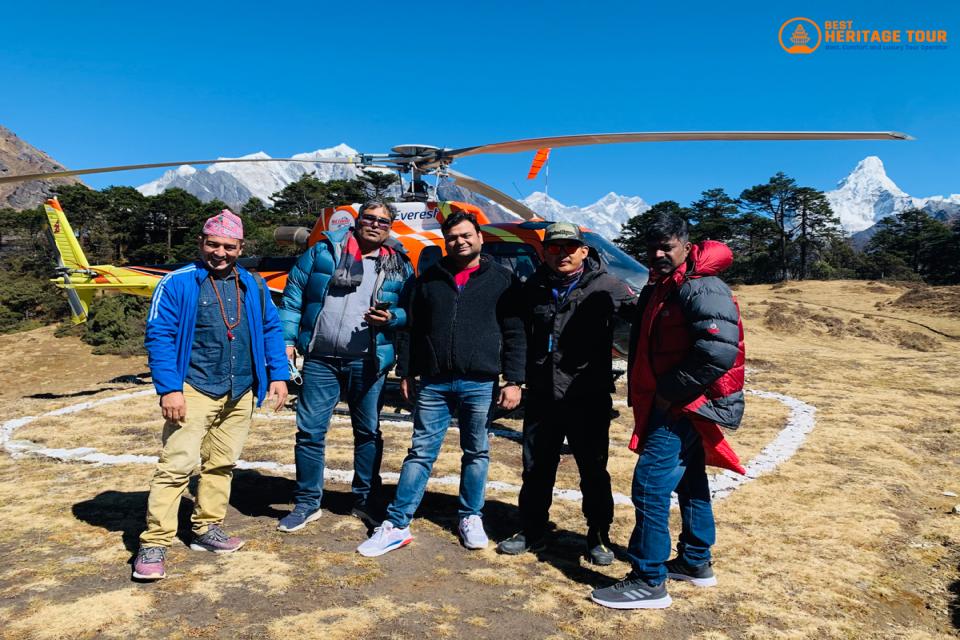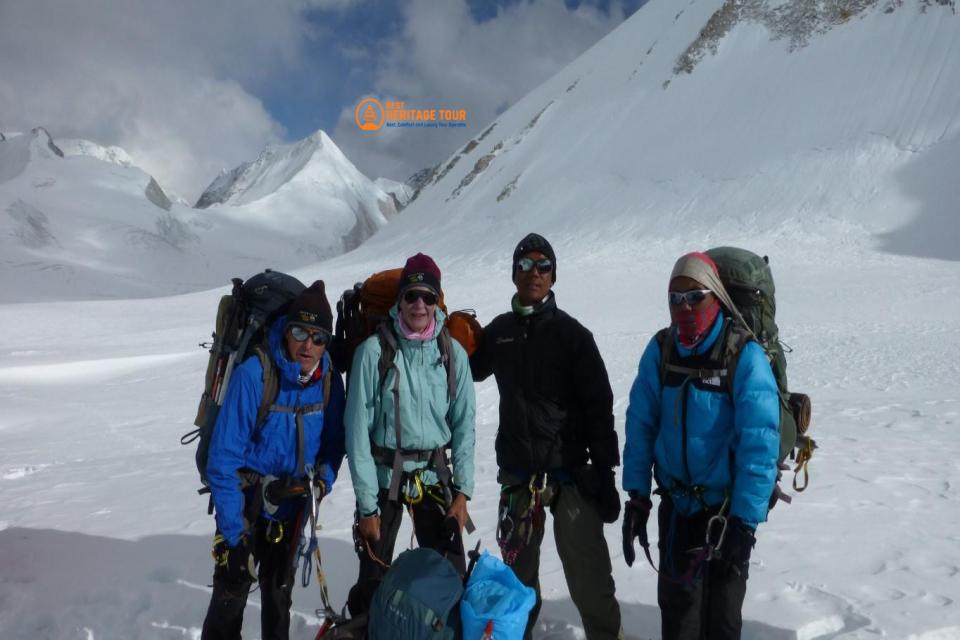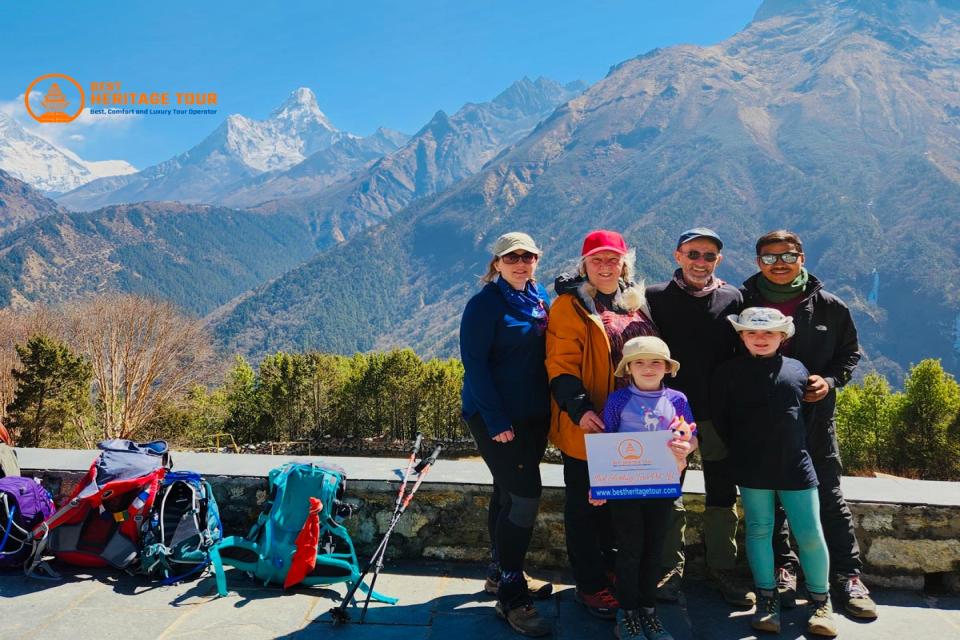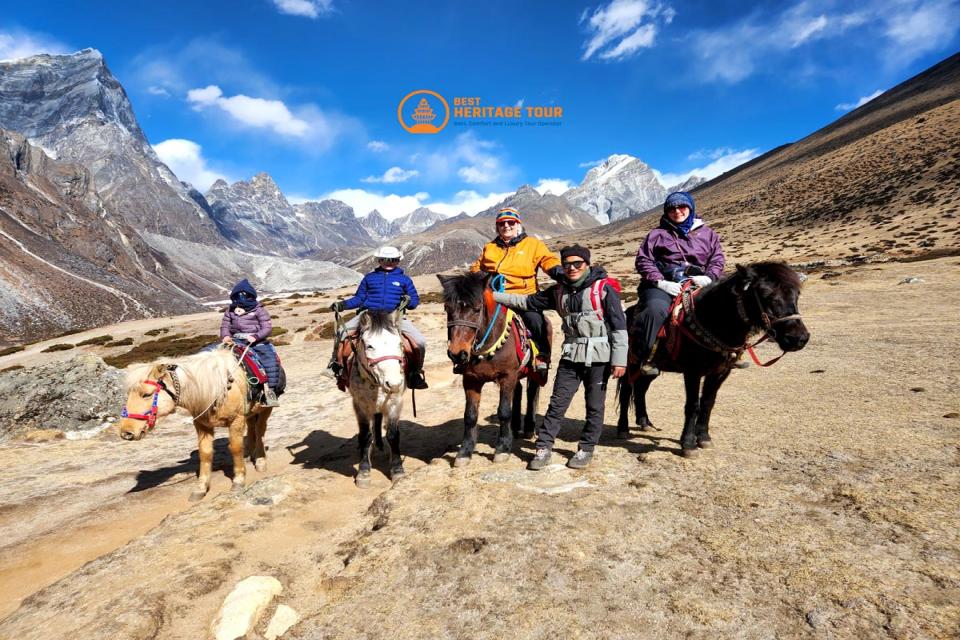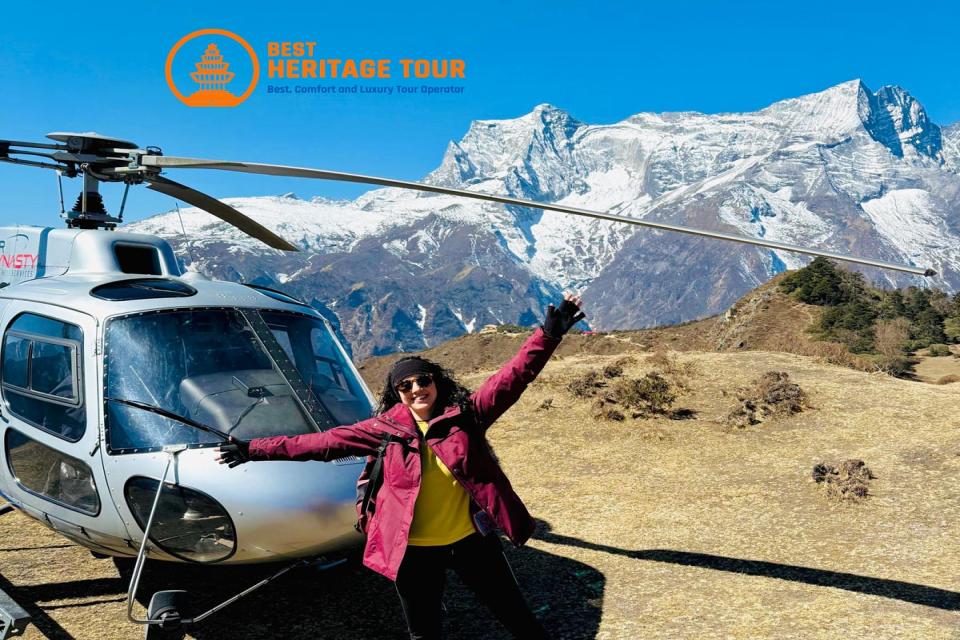Every year, thousands of trekkers from around the world gear up for the Everest Base Camp (EBC) Trek, and one of the most common questions we hear at Best Heritage Tour is:
“Is a 30°F sleeping bag enough for the Everest Base Camp Trek in April?”
If you’re preparing for your adventure in the Everest region, choosing the right sleeping bag is one of the most important gear decisions you’ll make. The Himalayas are unpredictable, and the temperatures at high altitude can surprise even experienced trekkers. April is considered one of the best trekking months, but nighttime temperatures can still get quite cold - especially above 4,000 meters.
As professional trekking guides and a trusted Himalayan tour operator based in Kathmandu, we have guided countless trekkers on the EBC route during April. This blog will help you understand:
-
What temperatures to expect in April
-
Whether a 30°F (-1°C) sleeping bag is enough
-
When you might need a warmer option
-
Pro tips from our guides
-
Layering strategies to stay warm at night
-
Extra warmth options available in tea houses
Let’s break down everything you need to know.
Understanding April Weather on the EBC Trek
April marks the heart of the spring trekking season in Nepal. Days are longer, skies are clearer, and the temperatures are milder compared to winter. But don’t let the sunshine fool you - nights in the Himalayas can still be bitterly cold.
Below is an approximate temperature range in major EBC stopovers during April:
|
EBC Route Point |
Approx. Daytime Temp |
Approx. Nighttime Temp |
|---|---|---|
|
Lukla (2,860m) |
10°C to 15°C |
2°C to 5°C |
|
Namche (3,440m) |
6°C to 12°C |
-2°C to 2°C |
|
Tengboche (3,860m) |
4°C to 10°C |
-4°C to -2°C |
|
Dingboche (4,410m) |
1°C to 8°C |
-6°C to -3°C |
|
Lobuche (4,910m) |
-2°C to 6°C |
-8°C to -5°C |
|
Gorak Shep (5,164m) |
-4°C to 5°C |
-10°C to -6°C |
As you can see, higher altitudes remain below freezing at night - even in April.
This is where your sleeping bag rating matters the most.
What Does a 30°F Sleeping Bag Rating Actually Mean?
A 30°F sleeping bag is generally rated for -1°C. However, most bags have multiple ratings, such as:
-
Comfort rating - the lowest temp at which an average sleeper remains comfortable
-
Limit rating - the lower limit for warmth for an average male sleeper
-
Extreme rating - emergency survival only
When someone says “30°F sleeping bag,” they usually refer to the limit rating, not the comfort rating.
Comfort rating for a 30°F bag is typically around 5°C to 0°C. This means:
For mild or cool nights, a 30°F bag works well For sub-zero Himalayan nights, it may not be sufficient on its own Which leads to the main concern:
Is a 30°F Sleeping Bag Enough for EBC in April?
Short answer: Yes, but only if you use proper layering and stay in insulated tea house rooms.
Long answer: It depends on your comfort level, altitude, and cold sensitivity.
Here’s the breakdown:
When a 30°F sleeping bag is sufficient:
-
You are staying in standard EBC tea houses, which trap some warmth inside.
-
You are a warm sleeper (you normally don’t get cold easily).
-
You pair your sleeping bag with thermal layers and proper clothing.
-
You use extra blankets that almost all tea houses provide upon request.
-
You know how to create a good nighttime layering system (covered below).
-
You’re trekking with an agency like Best Heritage Tour, where our guides ensure extra blankets and warmth if needed.
In April, the coldest nights at Lobuche and Gorak Shep usually dip to -8°C to -10°C, but indoor room temperatures remain higher - generally between -2°C and 5°C, depending on insulation and occupancy.
With a 30°F sleeping bag, proper layering easily compensates for the difference.
When a 30°F sleeping bag may NOT be enough:
-
You are an extremely cold sleeper
-
You prefer minimal clothing while sleeping
-
You are trekking independently without guaranteed support
-
Tea houses are especially cold or have thin walls
-
The weather turns unexpectedly harsh (seasonal storms can cause drops)
In these cases, a warmer bag (15°F or 0°F) might be more comfortable.
Expert Guide Opinion From Best Heritage Tour
As a trekking agency with decades of Himalayan experience, we have observed that:
-
Most trekkers do just fine with a 30°F sleeping bag in April
-
Extra blankets make a huge difference
-
Room occupancy also keeps temperatures slightly higher
-
Tea houses offer warm meals that help maintain body heat
Our guides always make sure you have:
-
Enough blankets
-
A properly insulated room
-
Hot water for bottles (for extra warmth)
-
Warm drinks before bed
Unless you are highly sensitive to cold, a 30°F bag is perfectly workable.
The Importance of Sleeping Bag Material and Insulation
Not all 30°F bags are equal. What matters more is the material and type of insulation.
Down Sleeping Bags
-
Lighter
-
More compact
-
Warm even at low weight
-
Excellent for high-altitude treks
Synthetic Sleeping Bags
-
Less expensive
-
Heavier
-
Bulkier
-
Retains warmth even when damp
For EBC, down bags are the preferred choice.
Layering: The Secret to Making Any Sleeping Bag Warmer
With a 30°F sleeping bag, strategic layering can make a big difference.
Here’s what our guides recommend:
Base Layer: Merino or synthetic thermal tops and bottoms (Helps regulate body heat and moisture)
Mid Layer: Fleece jacket or light down jacket (Adds extra warmth without overheating)
Outer Layer: Use your down jacket to cover your feet or lay over the sleeping bag (A pro tip many guides use at Gorak Shep)
Sleeping Bag Liner: A lightweight liner increases warmth by 5-10°C, depending on the material.
Woolen Socks & Warm Hat: You lose up to 20% of body heat through the head, so wearing a beanie at night is a must.
Tea House Warmth: What to Expect
Many trekkers underestimate how much tea house conditions affect sleeping warmth. Your sleeping bag doesn’t function in isolation - it works with the environment.
In April, tea houses along the EBC trail typically offer:
Blankets (sometimes multiple): Free or small charge. Usually thick yak-wool or synthetic blankets
Room insulation: Basic but better in lower villages. Gets thinner at high altitudes
Dining room heating: Most tea houses use a bukhari (gas or yak-dung stove). This doesn’t heat bedrooms, but it helps warm your body before sleep
Hot drinks and soups: Aid internal warmth before bedtime
Hot water bottle option: Many lodges offer hot water-filled bottles for a small fee. They act like a portable heater inside your sleeping bag
Because of these added warmth sources, a 30°F bag usually performs better than its rating on paper.
Pros and Cons of Using a 30°F Bag for EBC in April
Pros
-
Lightweight
-
Easier to pack
-
Suitable for mid-altitude nights
-
Comfortable inside insulated tea houses
-
Works well with layers
-
Less bulky for flights or porters
Cons
-
Might feel cold at Lobuche and Gorak Shep
-
Requires proper layering
-
Not enough for early March or late April cold spells
-
Cold sleepers may struggle without extra blankets
So, Should You Bring a 30°F Sleeping Bag for EBC in April?
Final Verdict:
Yes, a 30°F sleeping bag is enough for the Everest Base Camp Trek in April - if you know how to properly layer, use tea house blankets, and prepare for colder nights at higher altitudes.
If you are a very cold sleeper or want maximum comfort, you may prefer a warmer 15°F (-9°C) bag, but it is not mandatory.
For most trekkers, a 30°F sleeping bag works perfectly fine during April.
Conclusion
Choosing the right sleeping bag is key to enjoying a safe and comfortable Everest Base Camp Trek, especially in April when the days are warm but the nights can still be freezing. From our extensive experience guiding trekkers, a 30°F (-1°C) sleeping bag is generally sufficient, provided you use smart layering and take advantage of tea house blankets.
If you're unsure about your sleeping bag or want expert advice tailored to your trekking style, the team at Best Heritage Tour is always here to help. We offer professional guidance, equipment recommendations, and full trekking support so you can enjoy the EBC journey with confidence and comfort.
Contact Best Heritage Tour
If you're planning your Everest Base Camp Trek or need help choosing the right equipment, feel free to reach out to us anytime.
Phone / WhatsApp / Viber: +977-9851149197 / +977-9810043046
Email: info@bestheritagetour.com / bestheritagetour@gmail.com
Website: www.bestheritagetour.com
Office Address: Thamel Marg, Kathmandu, Nepal
We look forward to guiding you on an unforgettable Himalayan adventure!
Author: Best Heritage Tour
Date: 16th November, 2025



